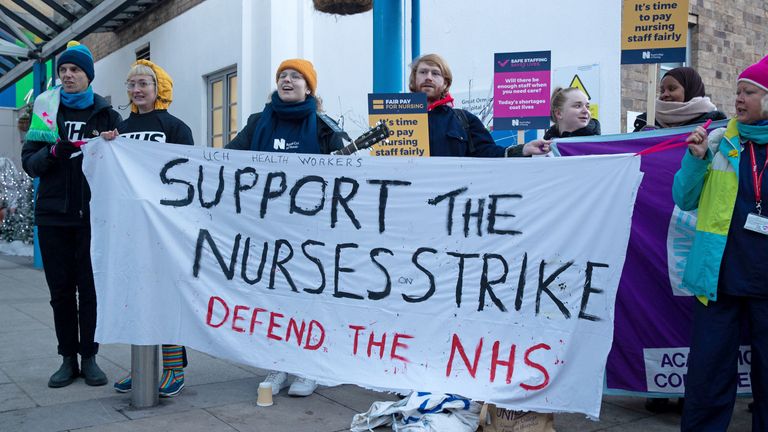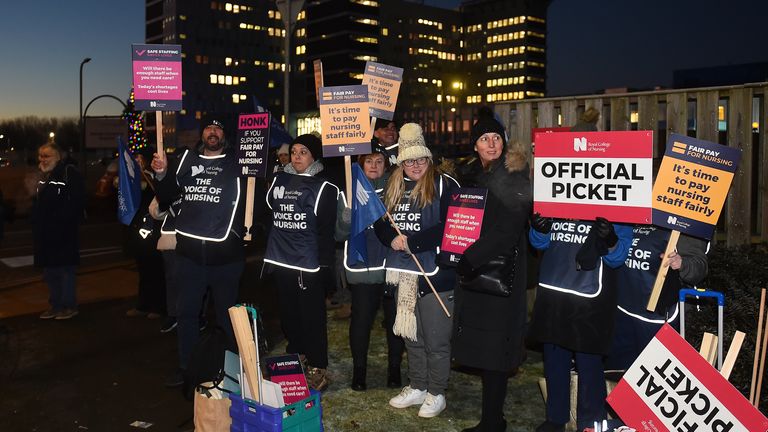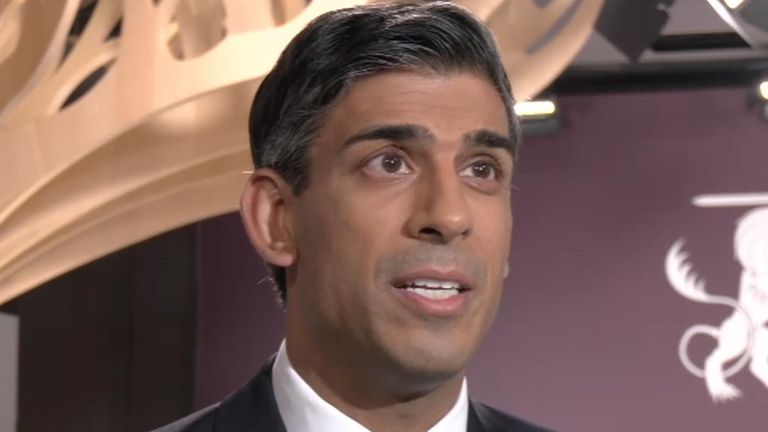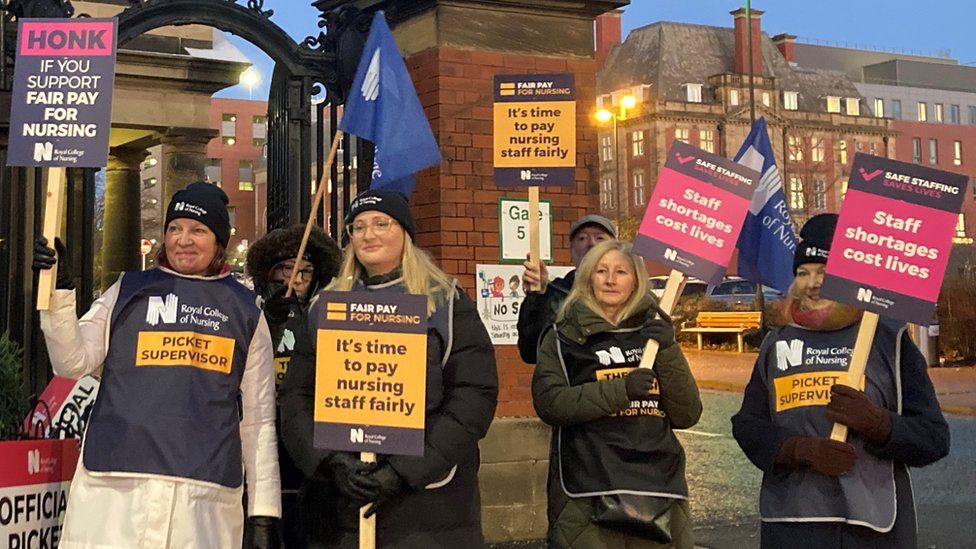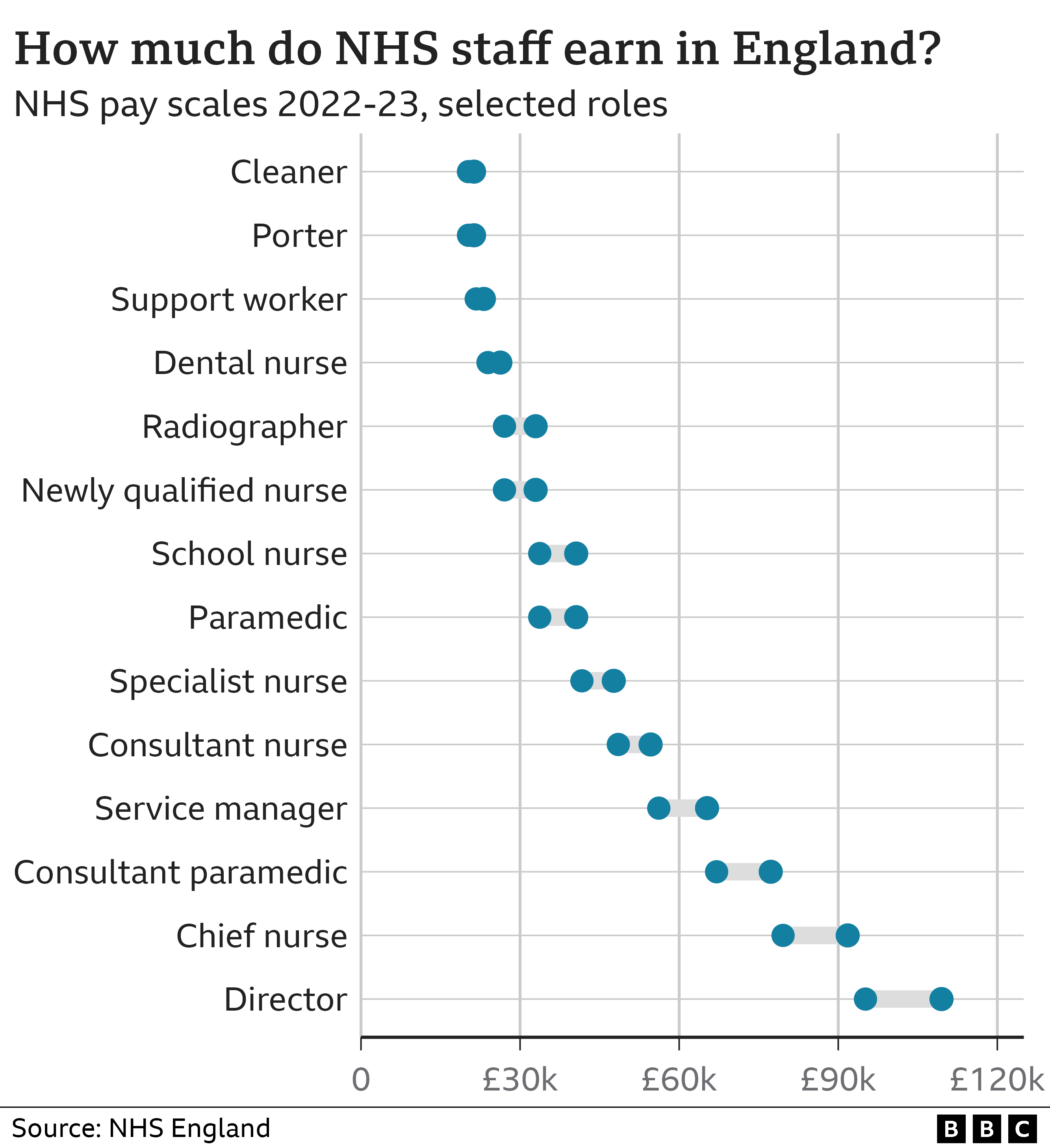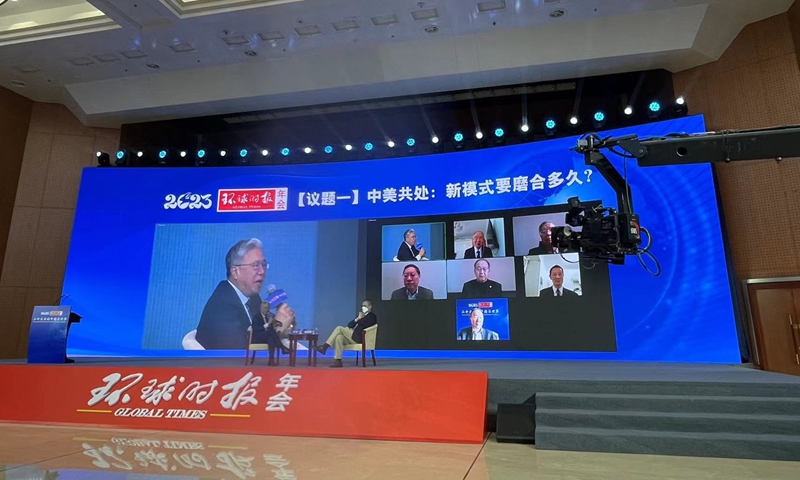I don’t like horror shows. So I tend to stay away from things that are senselessly ugly and irrational. Nevertheless, a few weeks ago, I was prevailed upon to watch and comment on, as it was occurring, the horror show that is the Colorado Oil and Gas Conservation Commission in deliberation.
The System at Work: Example One
Up for consideration was a massive oil and gas project to be developed in Aurora, the second largest city in Colorado and a seamless part of the Denver metropolis. The applicant calls itself Civitas, a Latin term meaning the citizen base in ancient Rome for political decision making. Embracing the Roman designations, the COGCC would have been known as civitates foederatae, or loyal satellite state—a roll it played with great distinction on this day.
As for Civitas itself, it is a confederation of old drilling companies, most of whom specialize in urban drilling. The big boys on Colorado’s Front Range like Chevron or Occidental tend to stay away from people’s bedroom windows when they can. It ain’t good politics for an industry that is already detested by many for poisoning children with a treasure trove of chemicals such as benzene while continuing to fulfill its central role in hastening the planet’s extinction. But the three companies making up the bulk of the Civitas empire obviously don’t really care. These bottom feeders go where no one else dares to go. As Willie Loman’s uncle might have said had he been on the Civitas’ board: ”there’s money to be made out there boys—so to hell with the people and to hell with the carrots. You know what to do. Keep the pols greased and the people confused, and the world stays our oyster.”
The day started out with a few people complaining, some bitterly, about what oil and gas development was doing to their lives. But this obligatory listening charade has been going on for years with no perceptible change in policy at the COGCC. Resultantly, very few bother to testify anymore. Frankly, one could expect more response from the stone totems on Easter Island than this professional crew handpicked by Governor Polis to keep the lid on, or as he says, “let the market decide.”
At issue was approval to drill 151 wells on 55 square miles inside the city boundaries of Aurora. The fact that Aurora projects for the area to have over 12,000 new homes and over 60,000 people in the near future got little discussion because, as we learned, the city slavishly supports the proposal for the taxes it will bring in.
Discussion of impacts on the 10,000 people already living in the new residential development of Aurora Highlands, median age 34, immediately adjacent the Civitas project area got equally dismissive treatment because local objections had been resolved amicably the day before this hearing. No question this lucky bit of news helped fuel the regulatory rapture. How this agreement came about or how much it cost got no discussion–Just as the health and climate impacts of adding 150 wells to the 130 Civitas already operates in the area got little discussion.
Approval was fast tracked because the COGCC’s commission head, Jeff Robbins, a truly oleaginous little fellow straight out of Dickens, said that because Aurora officials supported it, the commission had an obligation to do likewise. He went on to explain, with great solemnity, that the speedy adoption of Aurora’s plans showed their new rules to implement the state oil and gas act, SB19-181, that was passed coming on 4 years were working to perfection.
Perfection Under the Microscope
Let’s review some of these claims of perfection. First of all, the legislative declaration in the above referenced law is clear and precise: public wellbeing and the environment are to be protected as an ironclad condition for continued oil and gas development in Colorado. The seriousness behind these instructions is underscored by the fact that economic considerations are not to be factored in or become in any way controlling in the decision process.
An economic limit on enforcement is a proviso the oil industry fought hard to have included. It lost. As a result, SB 181 is a huge break from past federal and state laws dealing with the environment since in almost all cases heretofore enforcement has been controlled by the concept of economic feasibility; that is to say, enforcement had to stop when corrective action was beyond the polluter’s ability to pay or science’s ability to correct. The public was never guaranteed more than a half loaf of protection. Since the outset, this professional commission, and Robbins in particular, has been whittling away at SB 181’s full loaf of protection requirement. It’s why some of the more disgusted observers have come to mockingly refer to the commission as “Jeffy and the Bandits,” almost as if it were some sort of totally disconnected, wacked-out, local rock band.
For example, the COGCC has, little by little, substituted the word prioritize for protect, so that now the decision process rests on prioritizing public health and the environment, rather than protecting it. The press has obediently adopted this radical change in language and meaning.
As a result, Commissioner Robbins and his merry band have effectively repealed SB 181 and its clear legislative intent through rulemaking. No longer must the public and the environment be protected, but now public and environmental protection has some unknown stature in an ill-defined, if not contemptuously illiterate, hierarchy where it must compete with other considerations for priority: Is protection of the public and the environment at the top of this ill-defined hierarchy, or is it somewhere in the middle? Can economic considerations or polluter pleading move it down in this hierarchy? If we look at the Aurora decision, which rests on the fiction that people and oil wells can all be friends, we have to conclude it is at or near the bottom of the COGCC’s sandcastle evaluation structure.
Mountains of scientific and statistical information underpin this assertion. For example, while government representatives and Civitas were having their kumbaya moment, people across the country were being made aware of a new study showing that fossil fuel use is responsible for almost 10,000,000 deaths annually, making it the biggest killer of all time. Wars end, oil and gas development doesn’t.
Enquiring minds might also wonder how many of those deaths should be chalked up to Colorado public policy makers since Colorado is the 5th largest oil producer in a nation that is the world’s largest producer. Some might even wonder if we shouldn’t send the sheriff to make some high profile arrests at the governor’s office, for nothing quite creates a moment of coconspirator reflection so much as an arrest at the top.
Another very recent study shows that children living within a mile and a quarter of a single fracked well have almost a 3 times greater chance of developing leukemia than those who don’t. But this is only one of thousands of scientific and statistical studies that show fracking and oil development are relentless killers. The wonder is that government is never held to account.
In Colorado much has been made of the fact that the COGCC has a 2000-foot setback requirement separating new wells from people. But its only a sometimes thing as the Aurora hearing illustrated, since the several families living less than 1000 feet from the proposed drilling project had signed a piece of paper designed by Civitas lawyers stating that they didn’t mind if the frackers moved in next door. What inducements, if any, were offered was not discussed.
This breezy dismantling of the bedrock democratic principle that government’s first duty is to protect the people drew not even a muffled murmur from the Commission whose 5 members exact from the taxpayers over a million dollars in salary and benefits each and every year. Clearly, their new rules reestablish prioritizing oil and gas development over protecting public health, or, in other words, the resurrection of law as it was before SB 181 was passed.
And of course the fact that 50,000 new people will soon be moving into the Civitas neighborhood, adding to the 10,000 already there, wasn’t allowed to sully the rapture. In the case of the newbies, the state has already ruled that protection of anyone moving in after the wells are drilled ain’t none of them. This peculiar disavowal of responsibility was the handiwork of Senator Hickenlooper when he was governor. He said it was a matter for local government, not the state. He also established the ground rule that oil and government could and should be partners, not regulatory adversaries.
An Important Digression
As senator he was recently named one of the top insider stock traders in Congress. He and his wife’s 17 pages of stock transactions for 2021, which were filed late, show he sold approximately $250,000 in Chevron stock that year. Chevron is the second largest oil producer in the state. Recently Polis reminded Coloradans that if he were reelected, as he was to be, it would mean that two wealthy Democratic entrepreneurs, he, a florist and greeting card peddler, and Hickenlooper, a barkeep, would have governed Colorado for 16 straight years. Some winced.
Public Safety, Colorado Style
What might have been an additional complication at this hearing was the need to address a new state law requiring issues of environmental justice, particularly as they relate to the poor and traditionally underserved minorities, be addressed and resolved. Felicitous it was then that some, if not all, of the people signing the letter welcoming Civitas to their neighborhood were Latinx.
Left unsaid was whether these people truly understood what they were agreeing to or that such a mindless process could in anyway satisfy government’s foundational responsibility to ensure public safety.
Actually the history behind the establishment of the state’s 2000-foot setback rule is steeped in its own sordidness. First of all, you need to know that it has no scientific underpinnings. It is like the rabbit pulled from a hat, it just magically appeared. The magic behind it was a study commissioned by the state to look at health hazard risks. The modeling for hazards stopped at 2000 feet, so 2000 feet became the magic number even though study charts in its appendix showed that pollutants like benzene probably posed public health risks at a mile or more, not unlike the recent study cited earlier showing a three times increase in leukemia among children living up to a mile and a quarter from a fracked well. What difference the addition of 150 wells might make to this statistical evaluation remains unasked and unknown.
It may be relevant that back in in 2021 when Robbins, a lawyer by trade, was making his pronouncement that 2000 feet was protective of public health and safety, he was ignoring studies conducted in his own backyard. For instance, Dr. Lisa McKenzie of the Colorado School of Public Health and the Environment found that children with a specific childhood leukemia, Acute Lymphocytic Leukemia, “…were four times more likely to be living in the highest density of oil and gas” development than other children. In another of her studies available to Mr Robbins and the commission she found that mothers“living near more intense oil and gas development have a 40 to 70 percent higher chance of having children with congenital heart defects.”
It’s hard to argue the 2000-foot setback rule isn’t greenwashing on a grand scale. Nevertheless, it is and continues to be the linchpin allowing the oil industry and the Polis administration to chant in unison, like a worn out 78, that Colorado has the strongest oil and gas regulations in the nation. That the corporate press has religiously repeated this lie makes it true in the minds of many, and, given the general malevolence within the Polis administration in promoting oil and gas development, affords it unrivaled cover in the public space.
To recap then: the 2000-foot setback has no basis in science. It can be easily circumvented for any number of reasons, not least of which is the buying off of the soon to be poisoned. It can also be subverted by the industry proposing what the COGCC’s rules call substantive mitigation. In other words 2000 feet can become 500 feet if you play it right.
The System at Work: Example two
It’s what some call the Wonder Bread option—2000 feet can be measured at least 12 different ways. For example about a month ago Chevron came before Polis’s commissioners seeking approval for about 36 new horizontal wells in Weld County, the enduring epicenter for Colorado oil and gas development. Chevron promised to use “best management practices.” These are quite often such things as natural gas or electric powered drilling rigs rather than diesel and pipelines rather than onsite storage tanks, but most importantly to the case at hand, Chevron said it would close 105 old low or nonproducing wells as part of its mitigation package for the 36 new wells it proposed to drill.
Chevron’s analysis indicated plugging the 105 old wells would reduce overall methane emissions, thus acknowledging there’s a methane emissions problem. But plugging is primarily an engineering and cost consideration. Rarely if ever is it purely a public health and safety endeavor in the corporate mind, for the simple reason that if old wells remain unplugged within a new fracking field, they may rupture, as they have in the past, causing major surface cleanup costs, to say nothing of expensive delays and major reengineering costs.
Still, Chevron’s good-news announcement caused Commissioner Karin McGowan, a former deputy director at the Colorado Department of Public Health and the Environment and a person who, understandably, seems to be periodically afflicted with eye-lid fatigue at these hearings, to effuse that “This may be the first application where we’re seeing a net-positive cumulative impact.”
Her enthusiasms still searching for a mighty crescendo, she went on to say that while “A couple of the well sites would be within 500 feet of homes…” the fact that the landowner and his renters living there had given their written consent to be poisoned meant “there’s a compelling story here.”
One of Polis’s newly appointed commissioners, Brett Ackerman, a former state wildlife biologist, chimed in by saying, “ I think the lack of concern…by the residents is significant.”
Missing from these nutty assessments was any sense of disbelief or honest doubt that Chevron’s new drilling technology, no matter how whiz bang, could actually reduce pollution while increasing production. In other words, one might be able to accept that closing 105 old leaking wells and replacing them with 36 gleamingly new ones might decrease the leak rate within this small sample. But the obvious and real question is how much pollution results from burning the product from these 36 new wells which might produce as much as 18,000,000 barrels of oil or oil equivalent over their collective lifetime? Since the 105 old wells would produce practically nothing beyond their leak rate, the answer is clear, and probably explains why it wasn’t part of the conversation.
Some Troubling Numbers
In fact if one looks only at the last 5 months since the commission’s rules were made final, we find the commission, as shown in the table below, will have approved or revalidated the development of 4 massive projects, 2 of which, Box Elder and Well Ranch, have been discussed above, and one of which, Guanella, is up for approval soon. The grand total is approval for 1634 wells on nearly 175,000 acres of land, a land mass almost 5 times the area of the District of Columbia, or a little under twice the City and County of Denver’s land mass.
Add to this any number of random permits from smaller operators that continue to be approved weekly. And then add that prior to the adoption of the COOCC’s final rules five months ago the Polis administration had already approved over 5000 wells in the preceding 3 years. It’s at this point that one starts to see how relentlessly this administration is working to help create what U.N. Secretary General António Guterres recently termed a “climate hell.”
Finally, the state’s refusal to assert governmental responsibility in any way for the impacts of new oil development on the safety and well being of people moving into areas after the wells have been drilled is the final page in this sordid story.
The System at Work: Example Three
The COGCC’s treatment of a petition by the City and County of Broomfield is illustrative in this regard. Broomfield, another seamless city and county within the Denver metropolis, had gone before the COGCC in October to contest Civitas’s plans to drill 19 new wells on the county’s eastern border. Civitas you’ll recall is the same bunch that was recently approved to build 151 wells in Aurora.
Broomfield is a rapidly growing, middle-class city of roughly 77,000 people, with a population density of about 2,200 people per square mile. It is home to about 116 wells already, almost all of which are producing.
Broomfield brought evidence and support for their claim that Civitas’s wells would harm their citizens, both physically and emotionally in as much as the city was already peppered with wells, with people testifying that their health and mental well being had been compromised. The city admitted that while the land immediately adjacent to the planned drilling site wasn’t yet developed for residential use, it soon would be. And of course once again while there were 2 families that already lived inside the state’s 2000-foot hazard line, they too had given their permission for Civitas to drill next door, inducements unknown.
Recall that Mr. Robbins made quick work in approving the 151 wells in Aurora by claiming the commissioners had an obligation to honor the city’s strong support for the drilling proposal. But this time Broomfield’s strong objections held little weight.
Mr Robbins, who apparently lives in a hermetically sealed jar that shields him from all outside health and climate information, held that Civitas had “met its burden of proof.” He had in fact weighed all the scientific evidence and “did not feel the science information from Broomfield outweighed the scientific information from Crestone.”
This wily assessment brings up another ignored but oft-repeated instruction from the legislators who managed the passage of SB 181. It was their clear intent, said they,” that if substantial doubt existed in any public health or environmental decision process the precautionary principle was to apply: that is, the state was to rule on the side of caution.
Our old friend Commissioner Karin McGowan stepped in to bring her unique thought processes to the situation by saying: “We have dueling science, dueling data, dueling opinions…this is a community that feels that oil and gas has affected their quality of life. We have to take that into consideration … but Broomfield didn’t prove their (sic) point.”
Using this kind of reasoning we shouldn’t listen to anyone fearing the war in Ukraine might lead to nuclear annihilation or that continued fossil fuel development could lead to societal collapse and unremitting savagery, for there ain’t no proof.
Civitas brought in an environmental company headquartered in Arkansas called CTEH, a company they regularly use. In fact, according to CTEH’s webpage, it had been employed by Colorado’s oil and gas industry 180 times as of 2020. The New York Times examined the company and its environmental record a few years back. The report was not complimentary. The Times found that CTEH had “vouched for the safety of drywall products made by a Chinese company,” but that the company later settled a class-action lawsuit by “agreeing to pay between $600 million and $1 billion to homeowners affected by hazardous material.”
A retired Exxon engineer said that using CTEH was “like the fox guarding the chicken coup.” A toxicologist said that CTEH is hired to say, “everything is ok.”
It is against this background that we can once again judge the COGCC at work.
Some Final Thoughts on the Polis Administration
Theodor Adorno in Minima Moralia asserts that intelligence is a moral construct, with feeling or empathy essential to it. If Adorno be right, then Polis’s commissioners belong in a nursery for the criminally infantile, far, far away from deciding serious grownup issues, such as other peoples’ lives and the life of the planet.
Though I have strong feelings on the subject, I’ll leave it to others to decide where Polis, the father of this pitiful miscarriage, belongs. Still, a few examples that loom large in my view might help in this decision process.
One of the most important directions given by the legislative to the executive branch in SB 181 was for it to generate a way of measuring the cumulative impacts of oil and gas development in the state, both in the individual instance and collectively.
After almost 4 years, the Polis administration has done nothing in this regard, even though a template was at the ready–the federal government has been doing this sort of thing for 50 years under NEPA. Under the NEPA process the past, present, and known future actions by any and all parties using public resources, whether directly or indirectly, are collected and analyzed for their likely impacts on the people and the environment.
Without this sort of systematic data gathering and analysis, any attempt at assessing the impacts of oil and gas development on the public and the environment is a game for infants, fools, and charlatans. Citizen efforts to find out why the state isn’t doing what the law requires have been assiduously rebuffed. Not long ago I was told in response to a Colorado Open Records Act request that any information the state, and the Air Pollution Control Division in particular, had on its legal responsibilities to perform oil and gas air-impact analyses was privileged lawyer-client information and not available to the public. One activist asked me later, after reading the state’s slap down, if I thought they knew that according to our state constitution the citizens were the sovereigns?.
Water
And this sort of impact analysis isn’t rocket science. For example we know from the foregoing discussion that the Polis administration has approved roughly 1634 wells in the past 5 months. We know from Civitias’s own documents that they intend to use and destroy for any other use 20,000,000 gallons of fresh water to frack each of their wells. Thus, using their estimate as applicable to all 1634 wells, we get a grand use total of around 33 billion gallons of water, or enough water for domestic needs of 1.2 million people for a year, roughly a fifth of Colorado’s total population.
If you add in the other 5000 wells that have been previously approved during the first three years of the Polis administration, we find that the oil industry has or will use enough water to satisfy the domestic needs of another 3,000,000 people. Now to be sure water is a renewable resource that follows an annual cycle. But it’s also true humans generally consume less than 50 percent of the water they use, the rest goes back into the water system to be used again, downstream generally.
Fracking, on the other hand, consumes and destroys all the water it uses because it is too polluted for the industry to economically reclaim—think of it as just another oil subsidy. Thus, from the standpoint of effective use, it is no exaggeration to say that the oil industry in Colorado has destroyed more water over the last 3 plus years than the citizens of Colorado consume in a year. Despite oil industry claims to the contrary, it is undeniably a huge water user.
Governor Polis is a strong supporter of the State Water Plan (SWP). It carries a price tag of $20 billion or more in public development costs. This plan forecasts that Colorado, by 2050, will suffer water shortages of somewhere between 200,000 and 740,000 acre-feet—an acre-foot (af) is 326,000 gallons of water. The 200,000 af estimate of future human and industrial water needs in Colorado is about equal to what the oil industry will require to drill the wells the state has approved in the last 5 months, provided we apply the accurate concept of total destruction rather than the usual concept of consumptive use.
Admittedly this is a crude and ready analysis, but it is ballpark, and it cries out for serious comparative analysis and priority setting. This is especially so since in the opinion of many the SWP does not adequately address what are forecast to be the severe impacts of climate change on future water availability.
Besides the obvious question about why this administration’s left and right hand aren’t acquainted, a question also begins to surface about whether this administration even wants to know. Too, this cavalier destruction of the public’s water brings up another question about adequate public notice? Unlike the federal government, Colorado has direct democracy, and since water in this state belongs to the people, not the government, the people have the right to expect a direct vote on whether it wants its most valuable resource destroyed through fracking, a practice that is also helping destroy the planet?
Clearly, if this administration weren’t foot dragging on its statutory requirement to do cumulative health and environmental impact analyzes as a condition for more oil and gas development, these issues would have surfaced and the public would have had a chance to participate in the decisions, but just as clearly, that’s not the way it’s unfolded.
Wildlife
The impacts on wildlife, which are also compelled by SB 181 to be protected, are an even greater regulatory wasteland. For example about a year ago, a group of bird watchers brought to the attention of the COGCC that one of the companies that now form Civitas was drilling very near a Bald Eagle nesting area. They sought curtailment of development activity during the nesting season. They of course lost, because in the words of one of the commissioners,, she didn’t think the COGCC had the authority to regulate off the well site itself. The meaning of “protect” was simply lost on them. The immediate impact was that while about 20 nesting eagles were counted the year prior to drilling, the birders could find only one eagle in the area the year following.
In the entire history of the COGCC no drilling permit has ever been denied for wildlife or environmental reasons, and only once for public safety reasons, but that denial is sure to be reversed as soon as the internecine food fight that caused it is resolved behind closed doors.
Air
No one should be surprised to find that, like land and water, impact analyzes of oil and gas on Colorado’s air quality have been just as assiduously avoided. This has occurred despite the fact the state’s air quality rating for ozone poisoning was recently downgraded by EPA from serious to severe, a rating that puts Colorado’s Northern Front Range, with a population of at least 3,000,000 people, among the riskiest places in the United States to live in term of asthma affliction and increased premature death risks.
The state has long accepted that the major source of Front Range VOCs, which with sunlight produce ozone, are the fracking fields of Weld County. Yet, In the Polis administration’s master plan for improving the state’s air quality, it pathologically underestimates the contribution Weld’s oil production has on the state’s air pollution. As a result, the people become the villains, and the administration is hard on the trail of gas lawn mowers and automobile use. The state actually had a plan to encourage car sharing and public transportation use, until some corporations and the Chamber of Commerce objected that it might negatively impact industry efficiency and profits. Governor Polis then curtailed the plan.
I recently participated in a conversation with midlevel managers at the APCD. The meeting had been arranged by Chandra Rosenthal, the regional attorney for Public Employees for Environmental Responsibility (PEER). She and PEER had recently represented 3 pollution modelers from the APCD who claimed that the agency was not ensuring that air pollution permits complied with the requirements of the Clean Air Act (CAA) before approval. They were just pushing them out the door. The agency claimed it had no requirement to do modeling for many of the polluters seeking pollution permits under the CAA. It of course refused to judge its conduct under SB 181, which clearly requires this sort of analysis as essential to determining health and environmental impacts. The state hired a corporate law firm from Atlanta to review the whistle blower complaint, and still the whistle blowers won. It resulted in the division chief, Garry Kaufman, being demoted. It also resulted in two of the three whistle blower modelers quitting.
Through the miracle of magical thinking so endemic to the APCD, Mr. Kaugman has resurfaced as the Deputy Director for Regulatory Affairs, thus putting him back in charge of the things he was demoted for.
Our conversation this day was about when and how the APCD was coordinating with the COGCC on modeling for air pollution from proposed drilling permits. We discovered, as we feared, there wasn’t any coordination. The APCD simply did no pollution modeling prior to the drilling permit being approved by the COGCC, and, that, in fact, the COGCC approved the wells solely under its own procedures and that actual modeling for air pollution might lag drilling approval by as much as two years. They said that SB 181 was primarily the COGCC’s responsibility and that they generally waited on instructions from the COGCC with regard to oil and gas matters. They said apologetically that they were doing the best they could.
As discouraging as this exchange was, it did answer unofficially what the APCD refused to answer officially in an Open Records Act request. To whit: SB 181, a law created specifically to protect people and the environment in all issues related to oil and gas, and a law enacted to repeal and replace its predecessor, which openly encouraged and protected oil and gas development, has little to no impact on the everyday workings or culture of the APCD.
Polis’s appointments to a commission overseeing the APCD is further evidence of a protectiveness of the oil industry in his administration that some people think borders on criminality. This 8-member commission unlike the 5 commissioners at the COGCC are not highly paid. Theirs is basically an honoraria position, with the commissioners holding full-time paid positions elsewhere. This commission is called the AQCC, Air Quality Control Commission. It has oversight authority over the professional staff at the APCD, which as I’ve said before has state responsibility for air quality monitoring and enforcement.
In 2020, Polis began reshaping this commission. First he refused to reappoint its staunchest climate hawk. Then, little by little he has replaced the commission with oil men, so that today 4 out of its 8 members are oil men or oil industry sympathizers. One is a retired oilman, 2 hold management positions at Chevron and Occidental, the two largest operators in the state.
Gary Arnold , the fourth, is the business manager for the local Pipefitters Union—this is not your father’s union boasting of brotherhood and working-class solidarity. Arnold openly opposed and actively worked against a citizen sponsored statewide 2500-foot setback initiative. It almost passed, even though Polis too opposed it under the rubric of “one sight doesn’t fit all. “ This bought-at-Walmart wisdom is obviously true when talking pant size, but in a regularity environment it is patent nonsense. Take away the posted speed signs in your neighborhood and then count the kids on bikes and little old ladies walking their dogs you can kill in a month.
Arnold actively supported the Jordon Cove project in Oregon, which would have taken Colorado methane by pipeline for liquefying and marketing in Asia. More recently he helped form a sham front-organization for oil and gas called Coloradans for Energy Access. Its purpose is to stop any legislation or local ordinances that force electrification. Their disinformation campaign is propped up by the lie that natural gas is cheaper than renewables and that rapid conversion to renewables would further impoverish the poor.
The most recent addition to the AQCC is Bill Gonzalez. He’s become the industry’s Swiss army knife on regulatory matters. Indeed, before his recent appointment to the AQCC, Polis had picked him for the COGGC back in 2020 when the new “professional” commissioner was established.
To be eligible for appointment to the COGCC Gonzalez had resigned his job at Occidental, maybe at some sacrifice in salary if he was already making over $150 annually. His new appointment to the AQCC has no such requirement against outside employment, even if that employment is in the industry that is the major contributor to Colorado’s air quality problems. Neither did his appointment need Senate confirmation since the appointment was made while the legislature was out of session.
When at the COGCC, he was the only member voting against the 2000-foot setback, which was a wasted industry intervention since as I’ve shown the GOGCC’s setback rule can mean almost anything and therefore means nothing. Most importantly, he was an industry champion during the bonding rulemaking.
This was probably the most financially important rule for the industry because of exponential cost increases it would experience if decisions went the wrong way. For example several grassroots groups, not knowing how hopelessly the odds were stacked against them, asked that the industry deposit with the state full cash bonding for each and every well in an ownership. Their argument was one for simple equity. The industry enjoyed all the profits, they should therefore accept all the risks.
The industry in the past, as it does now, transfers most of the risk of closing old wells to the public by a bonding system that covers only a sliver of the actual costs should it default. In 2021, EPA estimated there could be as many 3.4 million abandoned wells nationally. These wells all belonged to someone. The someones just walked away, leaving cleanup and maintenance to the public. The Biden administration has allocated $4.7 billion in public money to start cleanup of orphaned wells nationally. It’s another subsidy to the industry of course, but it is a mere drop in the bucket to the likely overall costs.
COGCC claims Colorado has roughly 600 abandoned wells, and that there are roughly 50,000 active, unplugged wells, with as many as 70 percent being low or nonproducing. Some percentage of these 50,000 wells will, over time, become orphaned and a public liability. The COGCC had a chance to ensure against that, but didn’t, instead favoring a complex approach in which operators come in to argue before the COGCC as to how much insurance is proper for them. It thwarts public participation and is so fraught with exception making, that it is still not an operative rule.
During the hearings themselves, Mr. Gonzalez stood strongly against full cash bonding. He said the oil industry “had better things to do with its money.” He apparently didn’t think the people did. His position, which was also the industry’s position, won. Not long thereafter he resigned, saying he didn’t know where he’d land, but he was off seeking new horizons.
After what the industry must have considered a respectable hiatus, he reappeared, once again, as a employee of Occidental. But lo and behold he was no longer just the “Land Manager” for the DJ Basin. He was now the “Director” for the Rockies Surface Land. Who says virtue isn’t rewarded? It is when it wears a painted face.
Mr. Gonzalez can once again serve both Occidental and Governor Polis. That he will not and cannot serve the people of Colorado is predetermined not only by past performance, but by the fact his continued employment at Occidental and the brass nameplate showing him to be a “Director” is dependent on serving the corporation, not the people.
It’s been said there are places where some things are so wrong that not even their opposite is true. The COGCC and the APCD are two of those places. At the Governor’s Mansion you’ll discover the source of the wrongsy. It will be disguised in soothing words, endless promises, and clever denials. By this shall you know it.
DECEMBER 9, 2022

